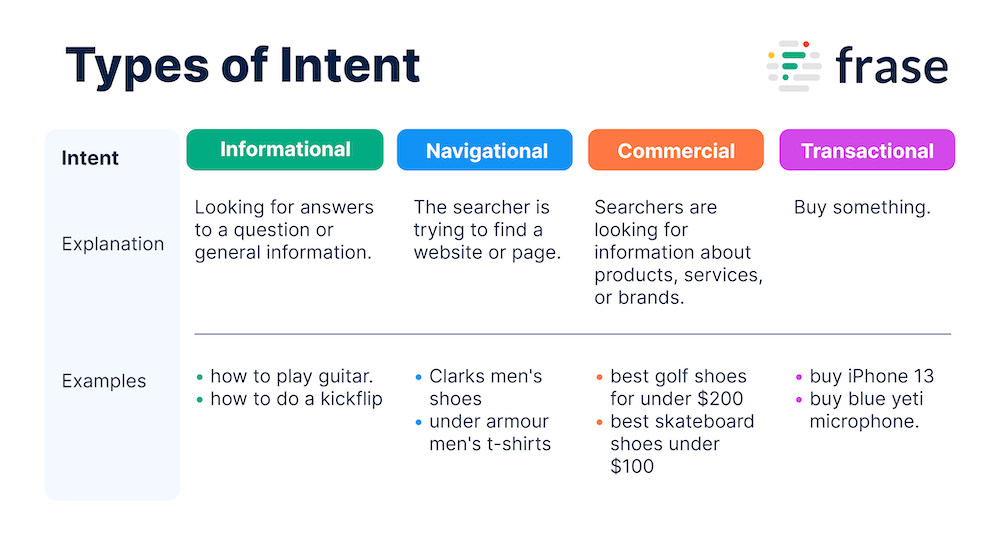AIM Uncovered
Exploring the latest insights and trends in technology and innovation.
Decoding the Mind of Your Searcher
Uncover what your audience truly seeks! Master the art of SEO by decoding the mind of your searcher and boost your blog's traffic now!
Understanding Search Intent: What Your Users Really Want
Understanding search intent is crucial for anyone looking to optimize their content for better visibility on search engines. At its core, search intent refers to the reason behind a user's query—what they truly want to achieve by searching. There are generally four primary types of search intent: informational, navigational, transactional, and commercial investigation. By categorizing search queries into these buckets, you can tailor your content to meet the specific needs of your audience, ensuring that you provide them with the most relevant information possible.
When creating content, keep in mind that users are often looking for quick, concise answers. For instance, if your audience is seeking informational content, they might appreciate a well-structured list or a step-by-step guide that breaks down complex topics. Alternatively, for transactional intent, product reviews and comparison articles can be highly beneficial. By aligning your content strategy with the different facets of search intent, you can enhance user satisfaction and improve your site's overall SEO performance.

The Psychology Behind Search Queries: Unlocking User Behavior
Understanding the psychology behind search queries is essential for improving your website's SEO performance. Users approach search engines with specific needs, driven by their intentions and emotions. When a user types a query, they may be seeking information, wanting to purchase a product, or looking for a solution to a problem. This underlying motivation plays a crucial role in how they formulate their search terms and ultimately influences the effectiveness of the search results they encounter. By analyzing search queries, marketers can tap into these motivations and tailor their content to meet user expectations, leading to enhanced engagement and conversion rates.
Moreover, the way users phrase their search queries can reveal significant insights about their thought processes. For instance, long-tail keywords often indicate a higher level of intent, as users are looking for precise information rather than general topics. Employing techniques such as A/B testing and user surveys can further refine your understanding of these behaviors. Analyzing patterns in user searches helps businesses not only optimize their content but also develop a more user-centric approach in their overall strategy. In essence, by unlocking the psychology of search behavior, companies can create more relevant and valuable experiences for their audience.
How to Align Your Content Strategy with User Search Patterns
Aligning your content strategy with user search patterns is crucial for driving organic traffic and enhancing user engagement. Start by conducting thorough keyword research to understand the terms and phrases that your target audience uses when performing searches. Utilize tools like Google Keyword Planner or SEMrush to identify high-volume keywords related to your niche. Once you have a comprehensive list, categorize these keywords based on user intent, such as informational, navigational, or transactional. This categorization will guide you in creating content that caters specifically to what your users are actively searching for.
Next, focus on developing high-quality content that seamlessly integrates these keywords while providing real value to your audience. Consider employing a variety of content formats, including blog posts, videos, and infographics, to meet the diverse preferences of your users. Additionally, monitor the performance of your content through analytics tools to see which pieces resonate the most with your audience. This ongoing evaluation will enable you to refine your content strategy, ensuring that it remains aligned with evolving user search patterns and continues to attract targeted traffic effectively.